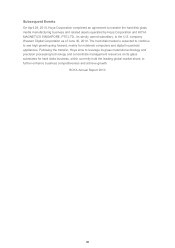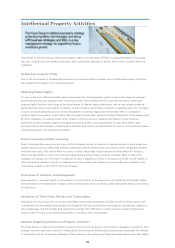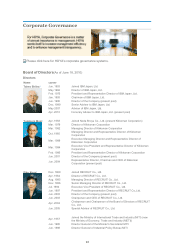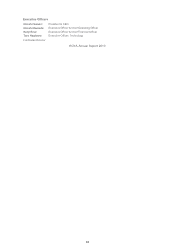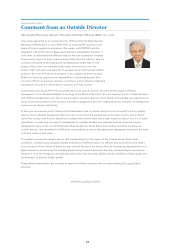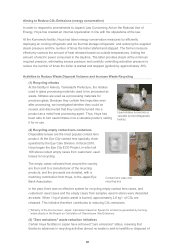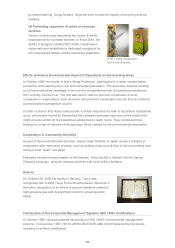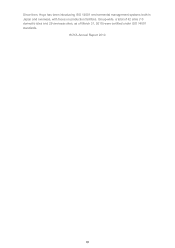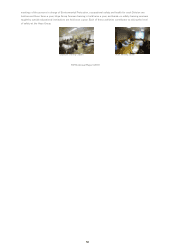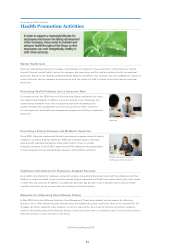Pentax 2010 Annual Report Download - page 47
Download and view the complete annual report
Please find page 47 of the 2010 Pentax annual report below. You can navigate through the pages in the report by either clicking on the pages listed below, or by using the keyword search tool below to find specific information within the annual report.
Used nitrates turned into a
valuable product(Nagasaka
facility)
Contact lens case and
recycling box
Aiming to Reduce CO2 Emissions (energy conservation)
In order to respond to amendments to Japan's Law Concerning Act on the Rational Use of
Energy, Hoya has created an internal organization in line with the stipulations of the law.
At the Kumamoto facility, Hoya has taken energy conservation measures by efficiently
deploying air cooling refrigerator and ice thermal storage refrigerator, and reducing the supplied
steam pressure and the number of times the boiler started and stopped. The former measure
effectively controls the amount of heat released based on outside temperatures, limiting the
amount of electric power consumed in the daytime. The latter provides steam at the minimum
required pressure, eliminating excess pressure and carefully controlling activation pressure to
reduce the number of times the boiler is started and stopped (ignited) by approximately 30%.
Activities to Reduce Waste Disposal Volumes and Increase Waste Recycling
(1) Recycling nitrates
At the facility in Hokuto, Yamanashi Prefecture, the nitrates
used in glass processing materials used to be processed as
waste. Nitrates are used as a processing materials for
precision glass. Because they contain few impurities even
after processing, we investigated whether they could be
reused, and discovered that they could be turned into a
product as a metal heat processing agent. Thus, Hoya has
been able to turn used nitrates in to a valuable product, selling
it for re-use.
(2) Recycling empty contact lens containers
Disposable lenses are the most popular contact lens
product. At the Eye City contact lens specialty chain
operated by the Eye Care Division. In fiscal 2010,
Hoya began the Eye City ECO Project, in which all
168 stores collect empty cases from customers' used
lenses for recycling.
The empty cases collected from around the country
are then sold to a manufacturer of the recycling
products, and the proceeds are donated, with a
matching contribution from Hoya, to the Japan Eye
Bank Association.
In the past, there was no effective system for recycling empty contact lens cases, and
customers' used cases and the empty cases from samples used in stores were discarded
as waste. When 1 kg of plastic waste is burned, approximately 2.6 kg(*) of CO2 are
released. This initiative therefore contributes to reducing CO2 emissions.
(*)Ministry of the Environment, Japan: Calculation based on figures for emissions generated by burning
waste plastic in the Report on Calculation of Greenhouse Gas Emissions
(3) "Zero emissions" waste reduction initiatives
Certain Hoya facilities in Japan have achieved "zero emissions" status, meaning that
thanks to advances in recycling activities almost no waste is sent to landfills or disposed of
46


